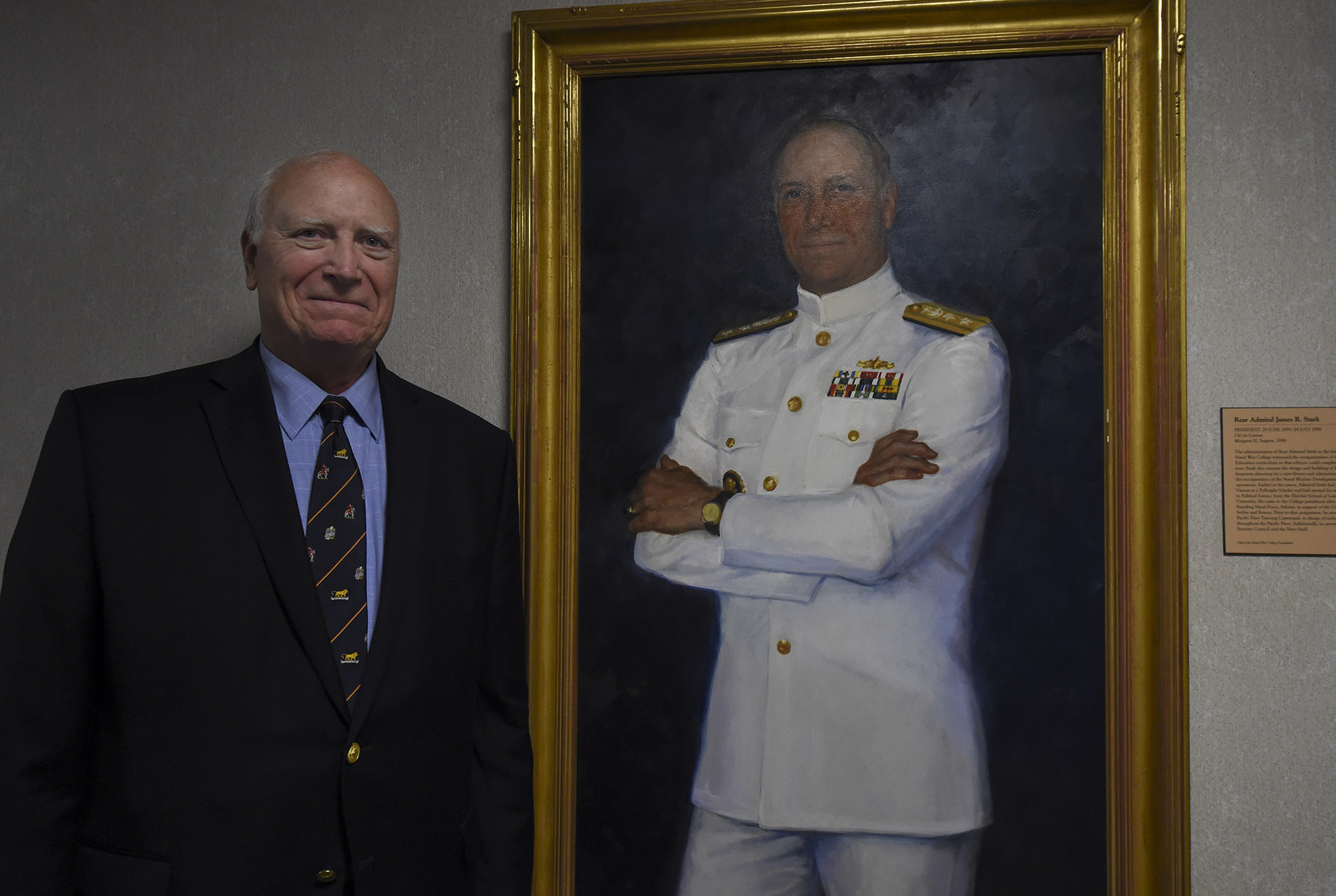Naval War College holds past presidents’ colloquium

NEWPORT, R.I. – Past presidents of U.S. Naval War College (NWC), Newport, Rhode Island from as far back as 1987 returned to the school for the inaugural “Past Presidents’ Colloquium and Strategy Review” last week to discuss the direction of the institution.
The colloquium was initiated and developed by current President Rear Adm. Jeffrey Harley (56th president, 2016) with the goal of drawing on the lessons and experience of the former leaders to help steer the college’s current and future path.
“I’ve been president for just about eight months,” said Harley. “In preparation for coming here, I talked with some of the past presidents. It occurred to me that we are at a great point in history where we can get some of the past presidents together and share with them where we are going with the college. I hope we can now exploit some of their ideas on the future as well and garner insights from them on how to stay more relevant and make a great school even greater.”
Former presidents attending were Vice Adm. P. Gardner Howe (55th president, 2014-16), retired Rear Adm. Jacob Shuford (51st, 2004-08), retired Rear Adm. James Stark (47th, 1995-98), and retired Rear Adm. Ronald Kurth (45th, 1987-90).
The former presidents were provided briefings from NWC’s academic and administrative departments.
The group also attended a meeting where they learned about the current state of the college and the new missions.
“We were able to review our strategic plan, including how we are navalizing, operationalizing, futurizing and internationalizing the college over the next few years,” said Harley. “We were able to get some insights on past experiences and how we can improve on what we are doing. We may even stumble across some new ideas on how to do this better.”
As part of the event, the group met with the school’s current deans, visited many new and updated facilities and reflected on their time here and the role the college plays in developing leaders.
“Every single headline in the news today reinforces the notion that the world is getting more complicated,” said Howe. “The ability to develop leaders who have the mental toolkit and critical thinking skills to effectively operate in that complex environment is vital. So the role of finding the time and space to invest in leaders is fundamental to me now. Hats off the college for instigating the symposium and strategic review.”
Bringing back former leaders was an opportunity to draw on their experiences to shape future direction of the school and reinforce the functions of the college.
“There is such extraordinary history here,” said Harley. “We are working to let people know the contributions NWC makes across the Navy and at higher levels, testimony before congress, national forums and on topics as wide ranging as history and international law.
Harley added that being a member of an exclusive group with only 56 members made the meeting more meaningful for him.
“The bond we share is derived from a position where we influence generations and generations of future leaders including the international students, many of whom go on to become their nation’s heads of navy,” he said.
The group of former presidents also visited the college’s new display, the Future Forces Gallery. The gallery will have an official opening this summer, but the presidents took part in an early ribbon-cutting.
NWC is an upper-level professional military education institution that includes a one-year resident program that graduates 600 resident students a year, and a multifaceted distance education program that graduates more than 1,000 students per year. Students earn Joint Professional Military Education (JPME) credit and either a diploma or a master’s degree in National Security and Strategic Studies or Defense and Strategic Studies. Established in 1884, U.S. Naval War College is the oldest institution of its kind in the world. More than 50,000 students have graduated since its first class of nine students in 1885 and about 300 of today’s active duty admirals, generals and senior executive service leaders are alumni.
About this News Article
Article Information
May 22, 2017
Most Recent
News, Media, & Events
U.S. Naval War College's 2023 Newport Arctic Scholars Study Integrated Naval Deterrence in the Arctic Region
Feb. 10, 2023
News Publication
NWC Alumni Serve as Delegates to International Seapower Symposium 25
Sep. 25, 2023
News Publication
Lectures of Opportunity: "The Role of Operational Energy in National Security"
Feb. 24, 2025
12:00 PM
U.S. Naval War College, 686 Cushing Rd, Newport, RI 02841
Chairman of the Joint Chiefs of Staff Delivers Lecture at U.S. Naval War College
Nov. 21, 2024
News Publication
